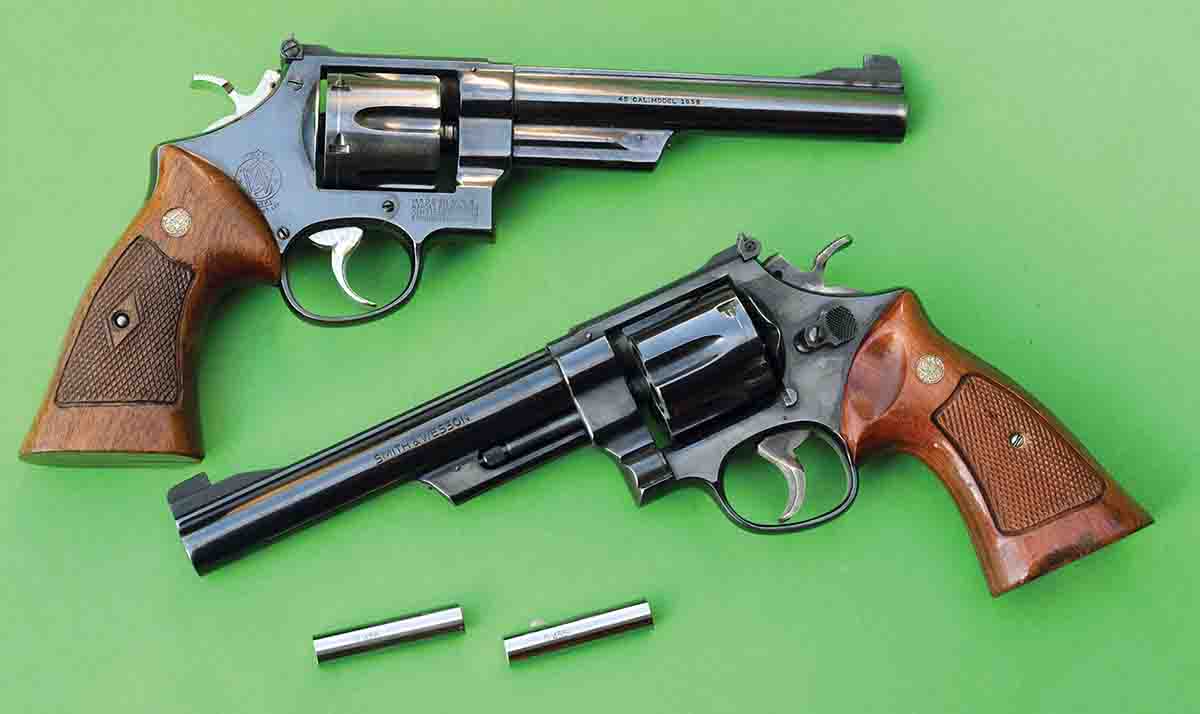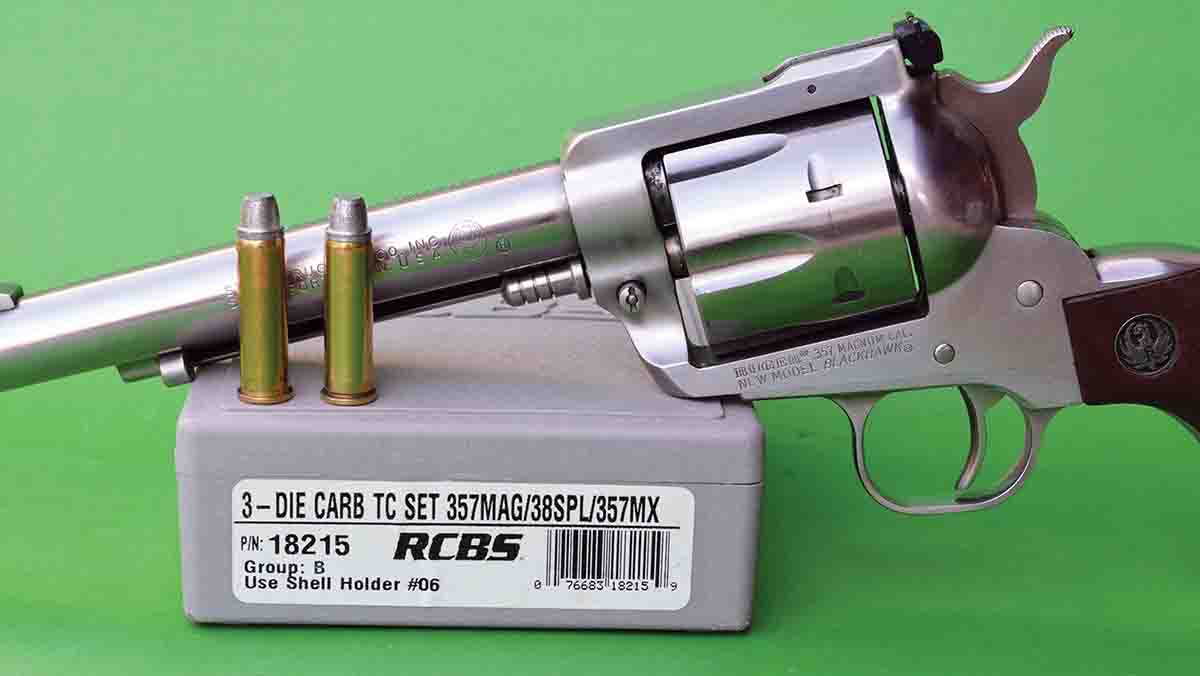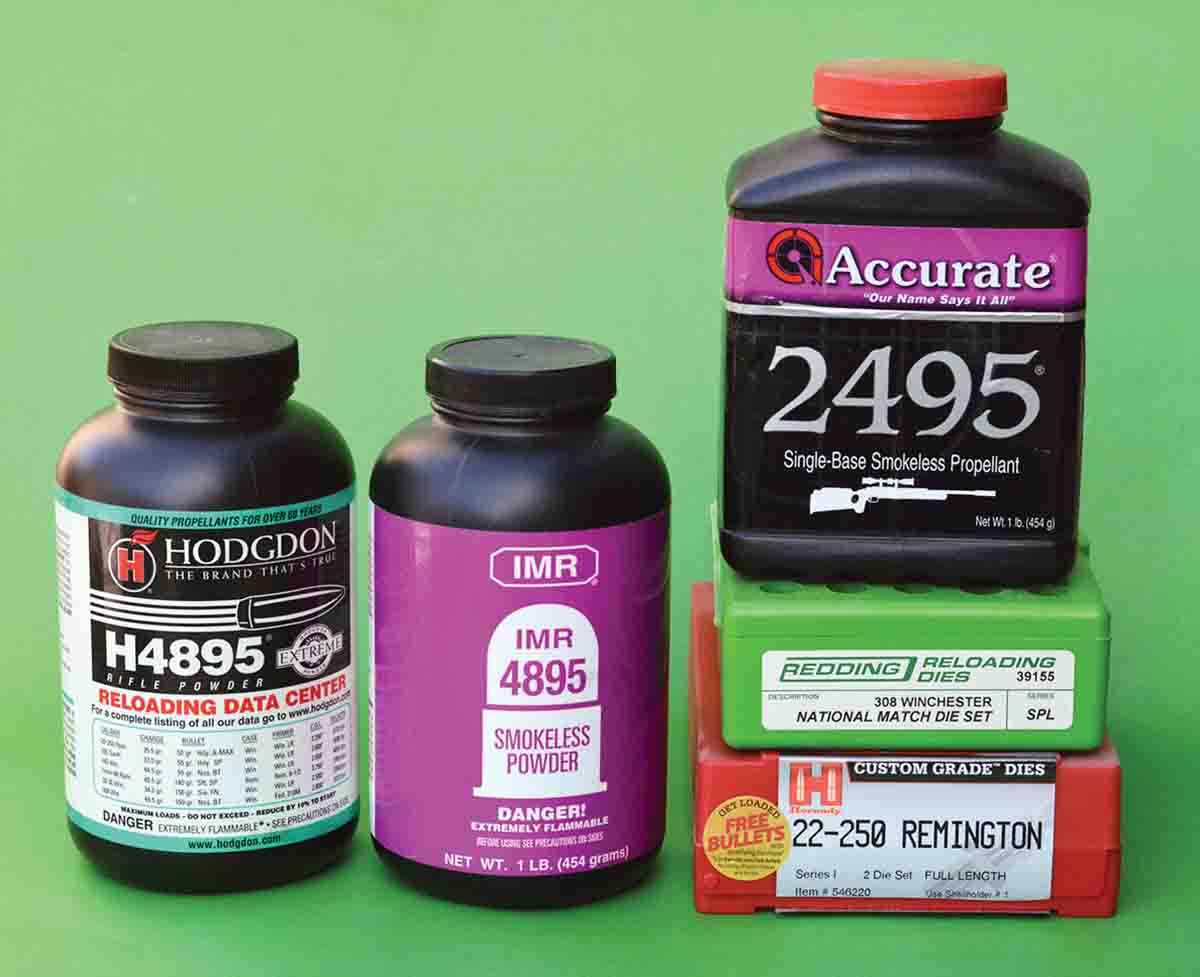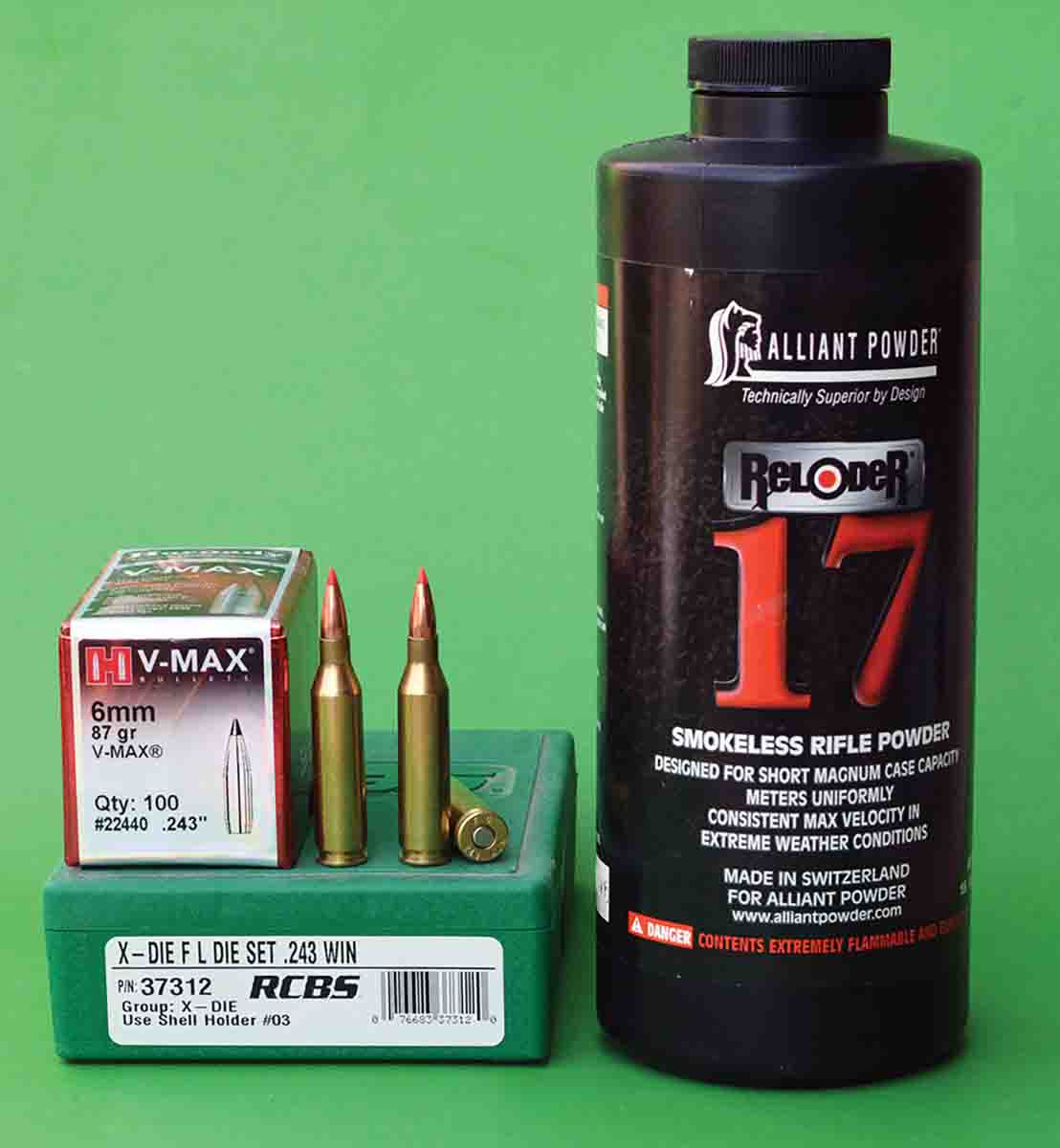Bullets & Brass
Accurate .45 ACP Sixgun Loads
column By: Brian Pearce | April, 23

L.K., via Facebook
A: During the era that your Smith & Wesson Model 25-2 was produced (1961-1976), as well as most previous post-World War II variants, they commonly featured throats that measure .454 to .456 inch, although some early guns have been found with .451-inch throats, but others have measured as large as .458 inch. As you know, .45 ACP ammunition is generally loaded by factories with bullets that measure .451 inch, as are most jacketed bullets offered to handloaders. But bullets in plated or cast configurations will often measure .452 inch. Regardless, either bullet size will tend to tilt as they are fired and pass through the large throats and then enter the forcing cone and barrel. This can cause bullets to deform slightly, but they essentially remain out of kilter as they pass through the barrel and then downrange. This bullet wobble robs accuracy and is probably why you are not thrilled with the accuracy of your gun. (This is much more than a theory, as high-speed cameras support this description.)
One of the advantages of handloading is to custom tailor ammunition to your gun. In this instance, you can substantially improve accuracy by using oversized cast bullets that measure .455 to .456 inch. As bullets pass through the throats and enter the barrel, they will be pretty close to straight and then will swage down to groove diameter as they enter the barrel. This is a less than perfect solution, but it will permit your gun to produce respectable accuracy without costly modifications. Generally speaking, heavyweight bullets that typically weigh 250 to 280 grains are longer and offer a greater bearing surface that limits tilting in the throat and often give top accuracy. Incidentally, many custom cast bullet companies offer larger bullet sizes as an option, or you can cast them yourself and size accordingly.
If you want to use jacketed bullets, the options are much more limited. However, various .451 inch, 230-grain JHP bullets from Hornady, Speer and Nosler are designed for the .45 ACP and have a longer bearing surface than traditional FMJ-RN designs. They tilt less as they pass through the throats and will offer improved accuracy. Another option is to use 240- and 250-grain, .452-inch bullets designed for the .45 Colt that feature an even longer bearing surface. However, their velocities are generally rather low and they fail to expand.
The best solution will require the aid of a custom sixgun smith and requires fitting a new cylinder chambered in a subcaliber, and then rechamber it to .45 ACP with a throat dimension of .4515 to .4520 inch. This can give marvelous results, but will cost much more than you paid for the gun in the early 1980s. I hope this helps.
Blue Bullets
Q: Hey Brian, I hope life is treating you well. I am loading a Blue Bullets 158-grain SWC bullet in the .357 Magnum. The diameter is .358 inch. Do I need to reduce loads somewhat, like a half grain? Thank you, sir!
P.M., via email

You did not state what type of powder or the charge weight that you are using. Just keep in mind that many magnum revolver loads developed with spherical (or Ball) powders should not have their charge weights reduced. On the other hand, if you are using an extruded powder, it is never a bad idea to reduce published data by 5 to 7 percent for starting loads.
IMR-4895 Alternative?
Q: I greatly appreciate Handloader magazine and the experience that most of your writers offer. I especially enjoy your columns and outstanding “Pet Loads” articles.
Now, I am seeking your advice. Powder is still very difficult to find here in Arizona, at least in the more rural area where I live. I have used IMR-4895 powder for many years in both the .22-250 Remington (my favorite coyote rifle) and .308 Winchester, but have not been able to replenish my supply for a couple of years now. Recently, I found an 8-pound canister of Accurate A-2495 powder. I was told by the gun store owner that it has a similar burn rate to IMR-4895, but he suggested that I seek out data, but I have found none. I am using the 55-grain Hornady V-MAX bullet in the .22-250 and the Nosler 165-grain Ballistic Tip bullet in the .308. I would like to duplicate the velocities of my original loads. Any insight that you might offer will be greatly appreciated.
D.T., Springerville AZ

Thank you for the compliments and I hope that your coyote hunting goes well.
Primer Pressure
Q: A year-and-a-half ago, I worked up a .243 Winchester handload for my Savage Model 10 with 24-inch barrel. The load consists of the Hornady 87-grain V-MAX bullet, Federal GM210M primer and 44 grains of Alliant Reloder 17 powder for over 3,400 fps. The overall cartridge length that was giving the best accuracy was 2.643 inches. My rifle will consistently stack five bullets into a single ragged hole that hovers around ¼-inch.
Satisfied with my new load, I started with 300 new Federal cases, prepared and primed them, then charged each case with a weighed powder charge using an RCBS Chargemaster. Soon thereafter, winter set in and I began regularly hunting coyotes with this load. I used almost half of the 300 rounds, which were super accurate and gave no issues in my rifle and accounted for more than 70 coyotes. Nearly a year has passed and I recently started getting ready for another winter of coyote hunting, but when I checked my rifle for zero with the remaining cartridges, it was blowing primers. Not just piercing primers, but pressure was high enough that fired primers were falling out of the primer pocket. Why has this happened? Nothing has changed and the load is now showing signs of excess pressure. Any help that you can offer will be appreciated.
P.K., Idaho

It also appears that your load is at least 1.5 grains above maximum, so it is suggested to reduce the powder charge by at least that amount, or maybe even 2 grains. It is always best to give up a small amount of velocity to obtain perfect reliability, stay within pressure guidelines and increase case life. I hope you have a great winter coyote season!


